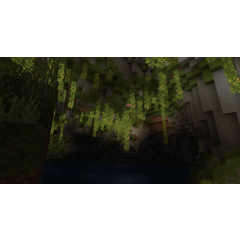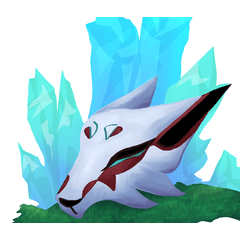

スクロールしたり、小さな表示の正方形をクリックしたりせずにスケッチレイヤーを表示および非表示にするアクション!これらのアクションにショートカットを追加して、すばやく使用してください。 Actions for showing and hiding sketch layers without scrolling or needing to click the small visibility square! Add shortcuts to these actions to use them quickly!
これは、スケッチレイヤーを見つけたり、ビューでスクロールしたり、非常に小さな表示の正方形をクリックしたりすることなく、スケッチレイヤーを表示および非表示にするためのオートアクションセットです。
これらのアクションにショートカットを追加して、すばやく使用できます。

なぜこのアクションなのか?

コントローラーやキーボードをお持ちの場合は、項目を探したり、画面上の小さなボタンやボックスをタップしたりするよりも、物理的なボタン を使って一般的な操作を行う方が簡単な場合があります。これは、多くのレイヤーを使用していて、それらが間隔を空けている場合に特に当てはまり、スクロールして切り替える必要のあるレイヤーを見つけるのが難しくなります。視認性ボタンもめちゃくちゃ小さいです!スケッチなしで図面を頻繁にチェックすると、最終的な図面をより速く確認して調整できます。
初回セットアップ
まず、アクションセットの素材をインポートします。
次に、ショートカットを設定します。
キーボードショートカットを追加する場合:
- Windows: [ファイル] > [ショートカット設定] ...>カテゴリー: オートアクション- macOS / iOS:アプリのメインメニュー>ショートカット設定...>カテゴリー: オートアクション- アクションセットの名前を見つけて、選択した [レイヤーを表示] アクションと [レイヤーを非表示] アクションにショートカットを追加します。制約: CLIP STUDIO PAINTの現在の制限は、「非表示」と「表示」が2つの別々のアクションである必要があるため、2つの異なるショートカットが必要になることです。将来的に制限が取り除かれて、トグルが1つのショートカットになることを期待しましょう。一部のマクロ ソフトウェアでは、1 つのボタンに対して 2 つのショートカットを自動的に切り替えることができます。デバイスまたはソフトウェアにこの機能がある場合、これは使用するのが良いでしょう。
オプション:コマンドバーまたはクイックアクセスパレットに追加できます
コマンドバーを右クリックし、[コマンドバー設定]を選択します。次に、ドロップダウンで[自動アクション]を選択し、必要なアクションを見つけて、それぞれに[追加]を選択します。完了したら[閉じる]します。ボタンを右クリック/長押しして[アイコン設定]を選択すると、アイコンを変更できます。
使用方法
1.レイヤーに「スケッチ」という名前を付けます
レイヤーに「スケッチ」という名前を付けると、そのレイヤーがアクションのターゲットになります。ターゲットはフォルダーにすることもできます。内側のレイヤーに「スケッチ」という名前が付いていないことを確認してください(同じ名前のレイヤーが複数ある場合、アクションは名前に一致する最下位レイヤーのみをターゲットにします。また、代わりに「ref」または「%sketch」という名前のレイヤーをターゲットにするアクションも含めました。別のレイヤー名をターゲットにしたい場合は、以下に独自の自動アクションを記録する方法の手順を示します。
2. アクションを使用する
ホットキーまたはショートカットを使用して、スケッチレイヤーを表示または非表示にします。レイヤーを見つけたり、小さな正方形をタップしたりする必要はありません!

それを使用するために知っておく必要があるのはそれだけです!
さらにショートカットが必要な場合、または別のレイヤー名を使用したい場合は、以下を読み続けてください。
-----
あなたは別の名前であなた自身の録音することができます!
CLIP STUDIO PAINTでは、自動アクション機能を使用してコマンドを記録できます。
自動アクションの詳細については、https://www.youtube.com/watch?v=zMjJTB99sx0 を参照してください。
異なるレイヤー名ターゲットに基づいて表示および非表示にする独自のオートアクションを記録できます。
たとえば、次のように「mustard」という名前のレイヤーを表示または非表示にすることができます。

ステップス:
1.新しいCLIP STUDIO PAINTのイラストを作成します。2. 2つの新しい(空の)自動アクションを作成し、それらに「表示」と「非表示」という名前を付けます。3.ターゲットレイヤーとして新しいレイヤーを作成し、任意の名前を付けます。4. 別のレイヤーを選択します。 これは重要です!5.「非表示」アクションを選択します。6. アクションの記録を開始します (赤い記録ボタンをクリックします)。7. 名前付きターゲットレイヤーの可視性をクリックして非表示にします。8. アクションの記録を停止します (赤い停止ボタンをクリックします)。9. 手順 5 から 8 を「レイヤーの表示」アクションで繰り返し、代わりにターゲット レイヤーを表示するレコードを作成します。
STEP4が大事!選択したレイヤーとは異なるレイヤーを表示または非表示にする必要があります。選択したレイヤーを表示/非表示にすると、特定のレイヤー名をターゲットにするのではなく、アクションのターゲットを現在選択されているレイヤーとして記録します。
---
これを行うためのクリーンな方法を教えてくれたteteotolisに特に感謝します!
ご支援いただきありがとうございます!
あなたは私の店を訪れ て、他の 何百ものブラシを手に入れることができます!- @PharanBrush

This is an Auto-Action Set for showing and hiding sketch layers without needing to find the layer, scrolling it in view or clicking the really small visibility square!
You can add shortcuts to these actions to use them quickly!

Why this action?

If you have a controller or keyboard, it can be easier to use a physical button for common actions than having to find items and tap small on-screen buttons and boxes. This is especially true when you use many layers and they get spaced apart, and it gets harder to scroll and find the layer that you need to switch. The visibility button is also really small!Checking your drawing frequently without the sketch helps you see and adjust the final drawing faster!
First-time Setup
First, import the action set material.
Then, set the shortcuts.
If you want to add KEYBOARD SHORTCUTS:
- Windows: File > Shortcut Settings... > Category: Auto Actions- macOS/iOS: Main App Menu > Shortcut Settings... > Category: Auto Actions- Find the name of the action set and add shortcuts to the Show layer and Hide layer actions of your choice.Limitation: A current limitation of Clip Studio Paint is that "hide" and "show" need to be two separate actions so you need two different shortcuts. Let's hope they can remove limitation in the future so the toggle can just be one shortcut.Some macro software can automatically toggle between two shortcuts for one button. If your device or software has this feature, this would be a good thing to use for.
Optional: you can add them to the Command Bar or Quick Access palette
Right-click on the command bar and choose [Command Bar Settings...]Then choose [Auto Actions] in the dropdown, find the actions you want and choose [Add] for each. Then [Close] after you're done.You can right-click/tap-and-hold on the button and choose [Icon settings...] to change the icon.
How to use
1. Name your layer "sketch"
Naming your layer "sketch" will make it the target of the action.The target can also be a folder. Make sure the layer inside is not also named "sketch"(If you have multiple layers named the same, the action will only target the lowest layer that matches the name.)I've also included actions to target the layer named "ref" or "%sketch" instead. If you want to target a different layer name, I have instructions on how to record your own auto-action below.
2. Use the actions
Use the hotkeys or shortcuts to show and hide the sketch layer! No need to find the layer or tap on the little square!

That's all you need to know to use it!
If you need more shortcuts or want to use a different layer name, continue reading below!
-----
You can record your own with different names!
In Clip Studio Paint, the Auto-Actions feature lets you record commands.
You can learn more about auto actions here: https://www.youtube.com/watch?v=zMjJTB99sx0
You can record your own auto-actions that show and hide based on a different layer name target!
For example, you can hide and show a layer named "mustard" like this:

Steps:
1. Make a new Clip Studio Paint illustration.2. Make 2 new (empty) auto-actions and name them show and hide.3. Make a new layer as your target layer, and name it the name you want.4. Select a different layer. THIS IS IMPORTANT!5. Select the "hide" action.6. Start recording the action. (click the red record button)7. Click on the visibility of the named target layer to hide it.8. Stop recording the action. (click the red stop button)9. Repeat steps 5 to 8 with the "show layer" action and record showing the target layer instead.
STEP 4 is important! You need to show or hide a layer different from the one you have selected. If you show/hide the layer you have selected, it will record the target of the action as the currently selected layer instead of targeting a specific layer name.
---
Special thanks to teteotolis for showing me the clean way to do this was possible!
Thanks for your support!
You can visit my store for hundreds of other brushes! - @PharanBrush


















































